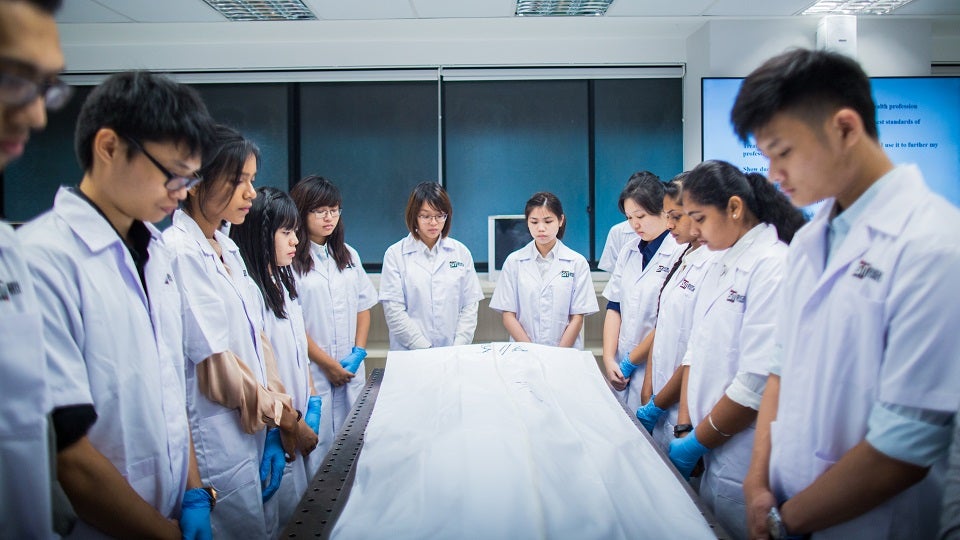Cadavers and anatomy classes - the past and present
Published: 02 Mar 2018

Cadavers are bodies used to teach gross human anatomy.
Dr Chong Siow Ann, alumnus of NUS Medicine and adjunct professor at Saw Swee Hock School of Public Health recalled his time in anatomy classes during the 1980s, where he would spend a certain number of hours per week over two years dissecting cadavers without knowledge of their origins. Medical students then were taught to objectivise the cadavers, suppressing the physical and emotional responses that would have been naturally stimulated from the “wilful mutilation of the body of another human being”, as explained in a book on dissection – Death, Dissection, and the Destitute.
Today, anatomy classes are a far cry from the past, as medical students take the Anatomy Student’s Oath to emphasise the importance of according the donated cadavers with respect. They are educated on the history of donors, and are able to view photographs of them when they were alive. Appreciation and memorial ceremonies are also held annually by the faculty and students for the donors and their families, as a sign of respect and gratitude for their role in nurturing future doctors. The usage of cadavers develops not just the students’ clinical and technical acumen, but also their empathy, a vital trait of good doctors given the links drawn by research studies between empathy and greater patient satisfaction, better outcomes, decreased physician burnout and a lower risk of malpractice suits and errors.
In recent times, there has been an increase in body donations, which has allowed the Department of Anatomy at NUS Medicine to resume dissection of cadavers.
Dr Chong believed that the idea of donating one’s body for medical training has become a more palatable notion, as there is now a greater sensitivity to the students’ emotions when working on cadavers, and proper deference being made to the bodies.
News Coverage
Dr Chong Siow Ann, alumnus of NUS Medicine and adjunct professor at Saw Swee Hock School of Public Health recalled his time in anatomy classes during the 1980s, where he would spend a certain number of hours per week over two years dissecting cadavers without knowledge of their origins. Medical students then were taught to objectivise the cadavers, suppressing the physical and emotional responses that would have been naturally stimulated from the “wilful mutilation of the body of another human being”, as explained in a book on dissection – Death, Dissection, and the Destitute.

